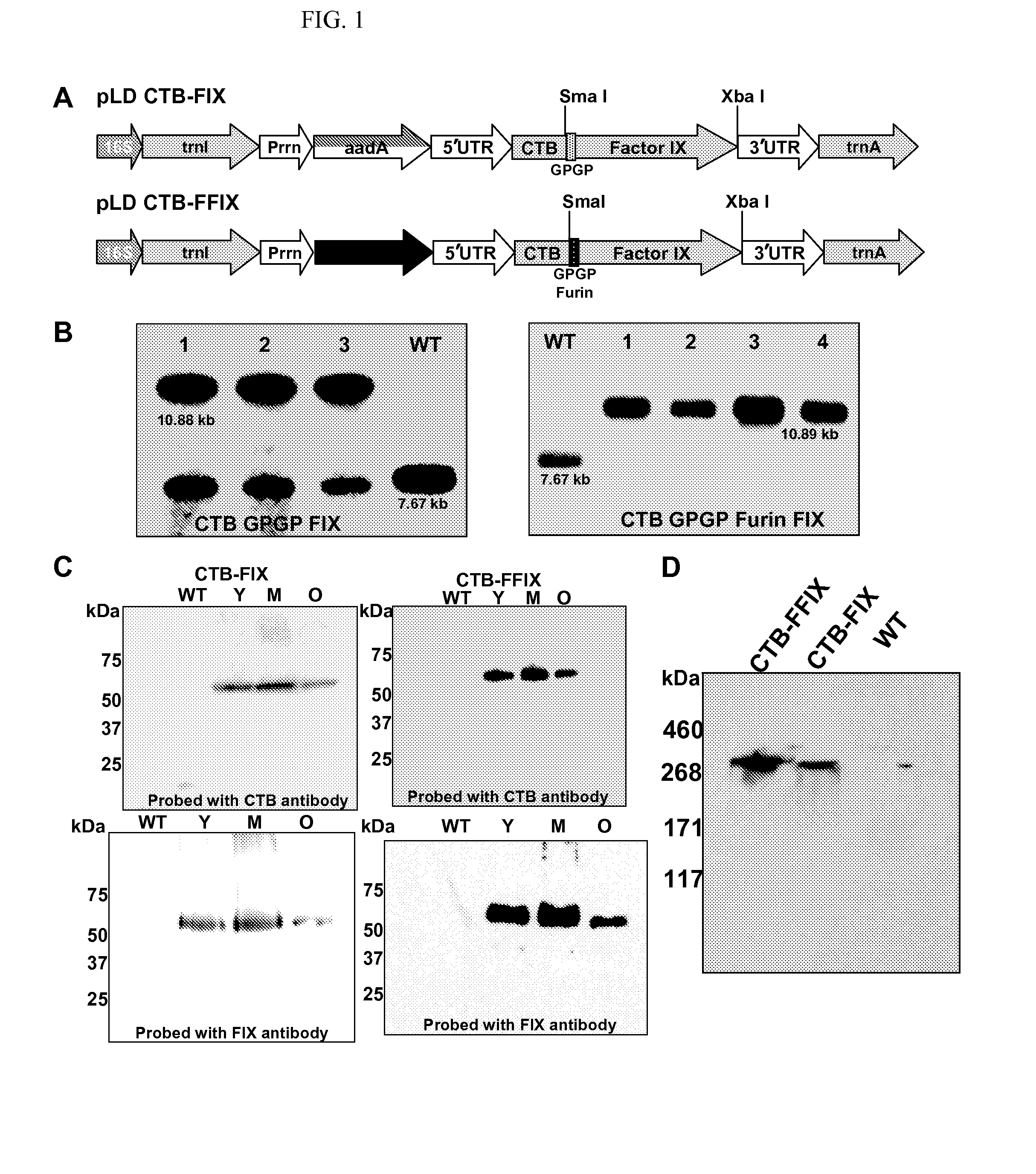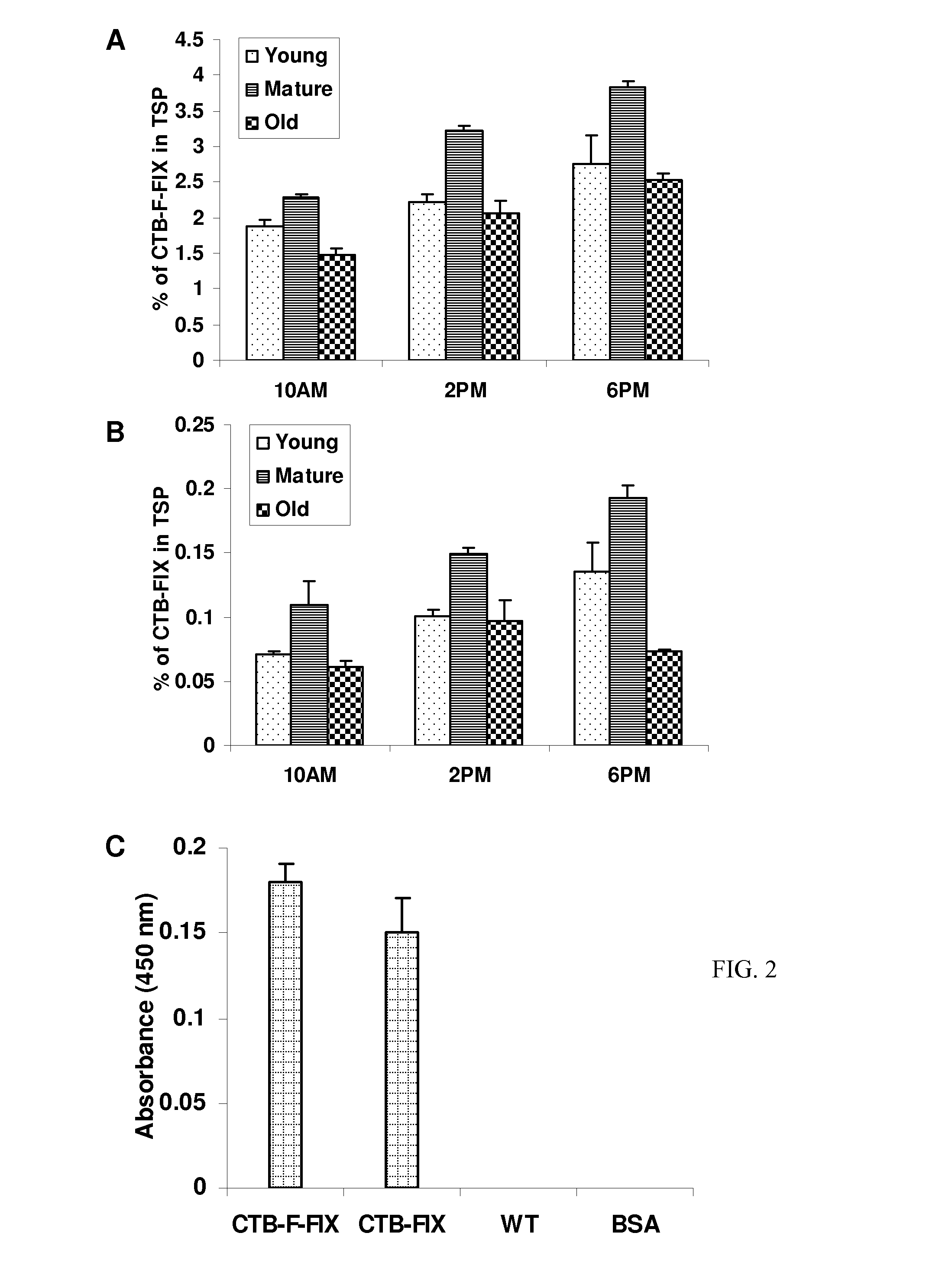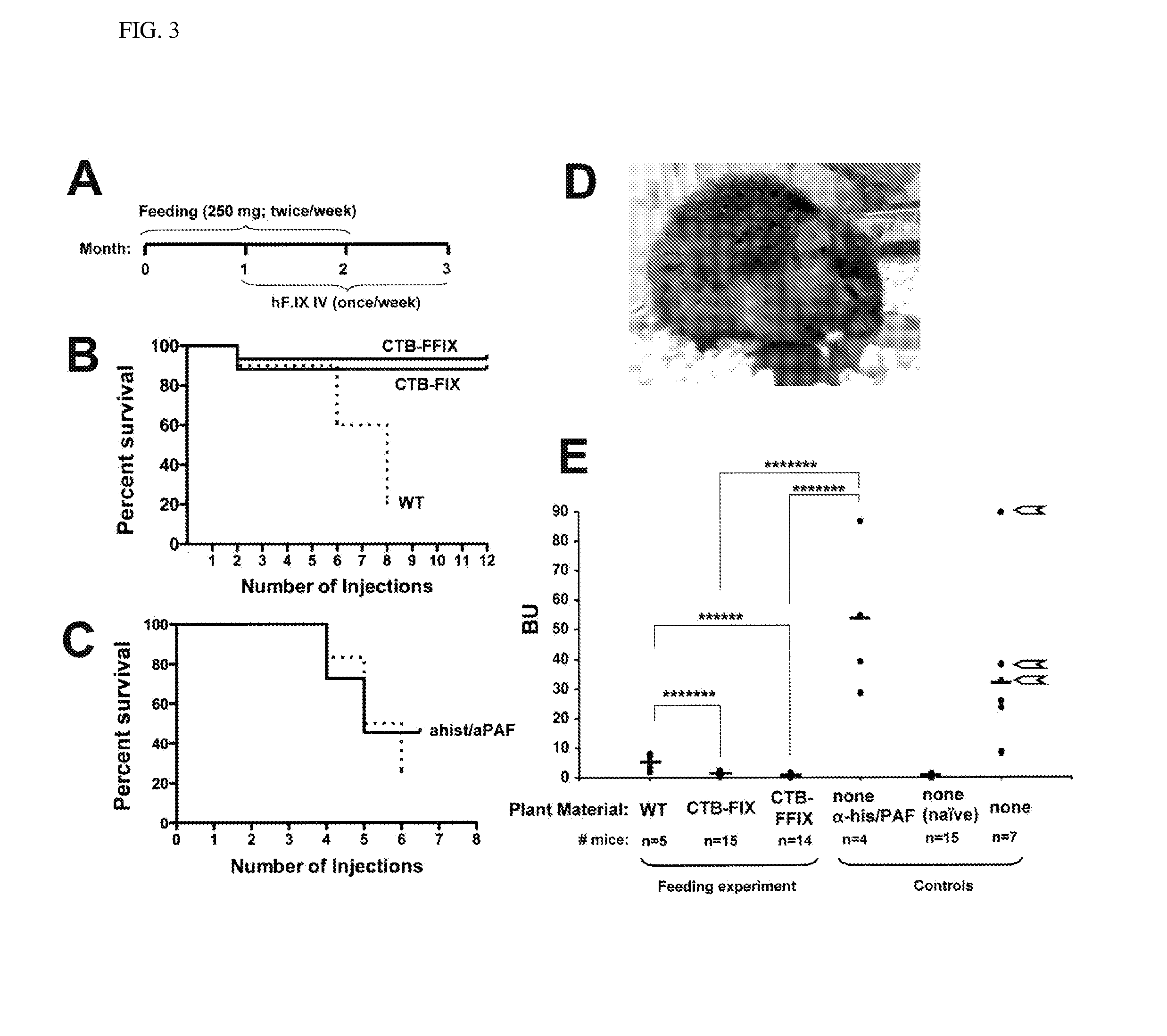Administration of plant expressed oral tolerance agents
a technology of oral tolerance agent and oral cavity, which is applied in the direction of drug composition, metabolic disorder, cardiovascular disorder, etc., can solve the problems of increased risk of bleeding-related morbidity and mortality, increased risk of factor replacement therapy, and increased risk of thrombotic risk,
- Summary
- Abstract
- Description
- Claims
- Application Information
AI Technical Summary
Benefits of technology
Problems solved by technology
Method used
Image
Examples
example 1
Construction of Chloroplast Transformation Vector
[0041]Both chloroplast vectors pLD CTB-FIX and pLD CTB-FFIX (FIG. 1A) used in this study are based on the universal chloroplast vector pLD-Ctv that targets the expression cassette into the spacer region between the trnI and trnA genes of the chloroplast genome for integration via homologous recombination (19). In the CTB-FIX construct, a glycine-proline-glycine-proline (GPGP) hinge was created between the fusion elements to prevent steric hindrance whereas in the CTB-FFIX construct, along with the GPGP hinge, a furin cleavage site was also introduced. The CTB-FIX and CTB-FFIX fusion genes were regulated by the psbA promoter and 5′ untranslated region (UTR) in order to achieve hyper-expression, as demonstrated previously for several other transgenes (20). The psbA 3′ UTR placed at the 3′ end of the fusion gene imparted transcript stability. The aadA gene driven by the tobacco plastid ribosomal operon promoter (Prrn) and the GGAGG ribos...
example 2
Regeneration of Transplastomic Plants and Evaluation of Transgene Integration by Southern Blot Analysis
[0042]Transplastomic tobacco plants were produced as described earlier (12, 21). Chloroplast transgenic lines were examined by Southern blots in order to confirm site-specific transgene integration and to determine homoplasmy or heteroplasmy. Digestion of total plant DNA from untransformed plants (WT) with HindIII generated a 7.67 kbp fragment when hybridized with the [32P]-labeled trnI-trnA flanking sequence probe indicating no integration of foreign DNA (FIG. 1B). All CTB-FIX transplastomic lines showed both 10.88 kb and 7.67 kb fragments, indicating heteroplasmy, whereas all CTB-FFIX transgenic lines showed only 10.89 kb fragment, indicating homoplasmy. Southern blots confirm site specific integration of the transgenes into the spacer region between the trnI and trnA genes (FIG. 1B). Homoplasmy in CTB-FIX transgenic lines was not achieved even after additional rounds of selectio...
example 3
CTB-FIX and CTB-FFIX Expression and Pentamer Assembly in Transgenic Tobacco
[0043]Immunoblots probed with the CTB antibody showed the presence of a ˜58-kDa fusion protein in both CTB-FIX and CTB-FFIX transplastomic lines (FIG. 1C). A similar banding pattern was observed by immunodetection with FIX antibody (FIG. 1C). Pentamer formation was observed in the native PAGE using CTB primary antibody (FIG. 1D). Quantitation of the fusion protein was carried out by densitometry on western blots of plant samples using known amounts of purified CTB. The expression levels varied significantly depending on the developmental stages and time of leaf harvest (FIG. 2A, 2B). Maximum expression was observed in mature leaves harvested at 6 PM. Transplastomic lines of CTB-FIX and CTB-FFIX had expression levels of up to 0.28% and 3.8% fusion protein respectively in the total soluble protein. Introduction of the furin cleavage site clearly stabilized FIX and enhanced its accumulation. The GM1 binding assa...
PUM
| Property | Measurement | Unit |
|---|---|---|
| Fraction | aaaaa | aaaaa |
| Coagulation enthalpy | aaaaa | aaaaa |
Abstract
Description
Claims
Application Information
 Login to View More
Login to View More - R&D
- Intellectual Property
- Life Sciences
- Materials
- Tech Scout
- Unparalleled Data Quality
- Higher Quality Content
- 60% Fewer Hallucinations
Browse by: Latest US Patents, China's latest patents, Technical Efficacy Thesaurus, Application Domain, Technology Topic, Popular Technical Reports.
© 2025 PatSnap. All rights reserved.Legal|Privacy policy|Modern Slavery Act Transparency Statement|Sitemap|About US| Contact US: help@patsnap.com



